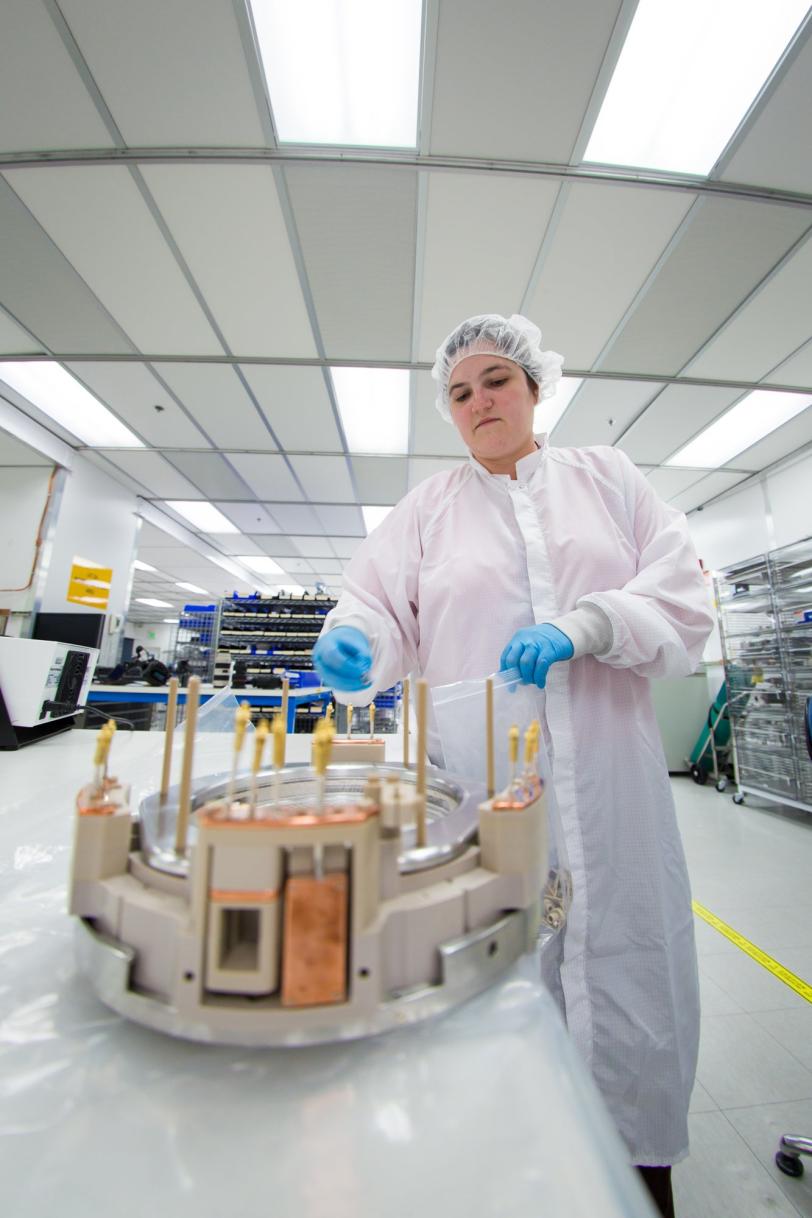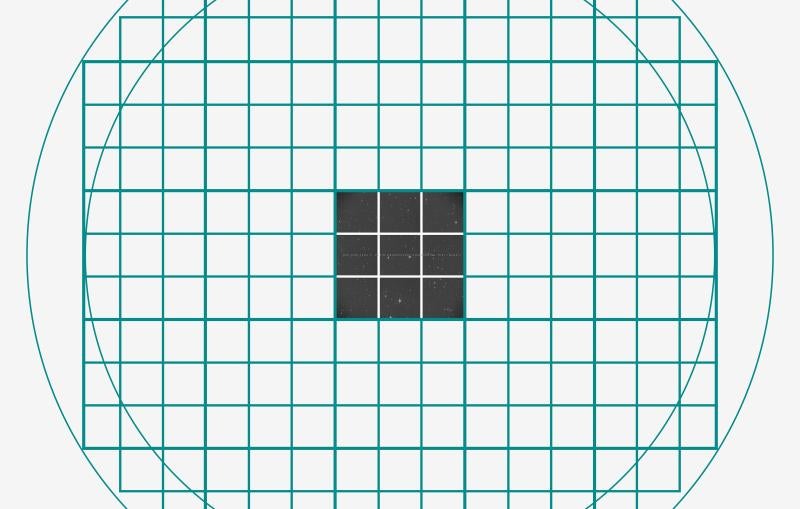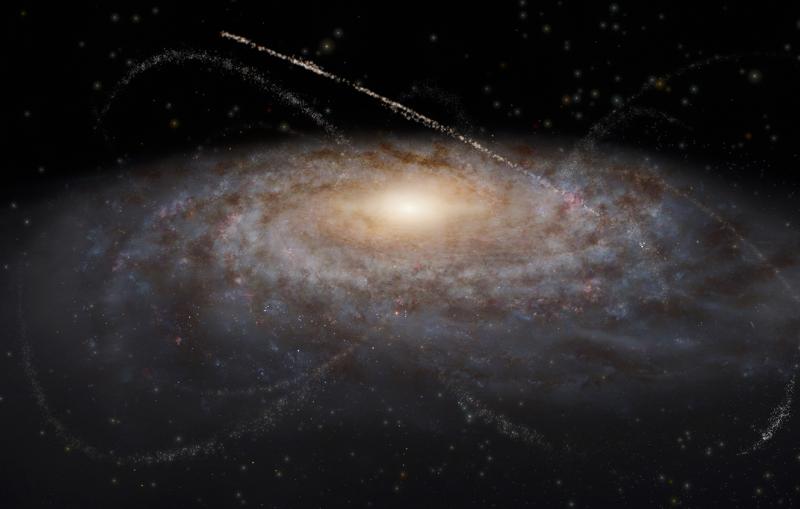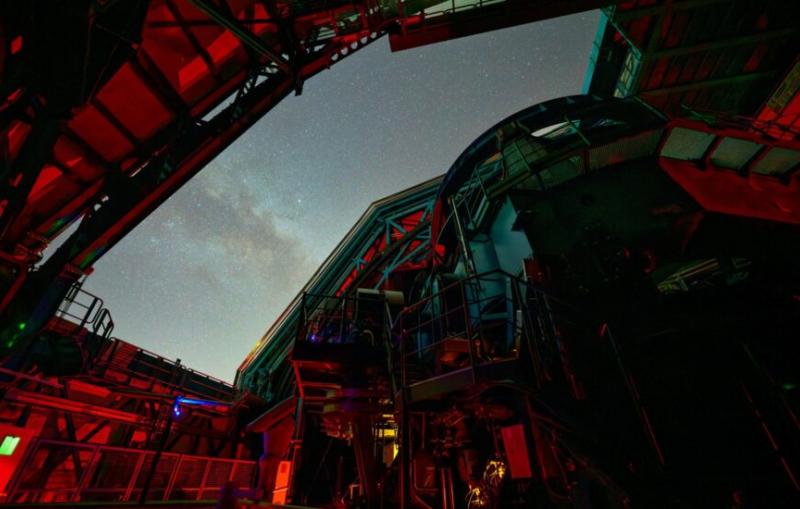Q&A: Dark Matter Hunter Kimberly Palladino Helps Move Plans for LUX-ZEPLIN Experiment Forward
SLAC’s team of dark matter hunters recently gained a new member.
SLAC’s team of dark matter hunters recently gained a new member. Astrophysicist Kimberly Palladino joined the lab in October 2014 to develop a test facility for the future LUX-ZEPLIN (LZ) detector, which will be the largest and most sensitive dark matter detector of its kind. LZ will greatly expand on the capabilities of two similar, smaller-scale experiments – the current LUX and former ZEPLIN experiments.
Dark matter accounts for almost 85 percent of the matter in the universe. Yet, it has thus far eluded detection and its nature remains unknown. With the LZ experiment, Palladino and her fellow LZ researchers hope to learn more. The detector’s centerpiece will be a huge container filled with 7.7 tons of liquefied xenon gas. It will be installed at the Sanford Underground Research Facility, approximately 1 mile underground, to shield it from cosmic disturbances. If everything goes according to plan, the experiment will begin in 2019 to hunt for hypothetical particles known as WIMPs, or weakly interacting massive particles, which many theorists suggest are the fundamental building blocks of dark matter.
In this interview, Palladino talks about her role in the LZ project and her motivation for complex dark matter research.
In a nutshell, what is the LZ project about?
LZ will be searching for a certain type of dark matter particles, called WIMPs, as they traverse a big cylinder filled with liquid xenon. WIMPs almost never interact with ordinary matter, so most of them will fly straight through the cylinder. However, once in a while, a WIMP may collide with one of the xenon atoms, causing its nucleus to recoil from the impact of the collision. If WIMPs exist, we may see a few tens of these events a year.
In the collision process, xenon will emit photons, which hit photomultiplier tubes at the top and bottom of the cylinder that amplify the photons into detectable flashes of light. The atoms will also send out electrons; an electric field pushes them to the top, where they will also generate flashes of light. Photons travel much faster than electrons, so we’ll detect their signals first, with the electron signals coming in after some delay. Our analysis will look for sequences of signals that cannot be explained as anything else than the signatures of WIMPs.
What is your role in the project?
We’re currently building a test stand at SLAC. LZ will be a complex system with many components and we want to ensure that we understand all of them, giving us reassurance that we’ll reach our experimental goals once the experiment is up and running. As a project scientist, I’m in charge of coordinating the setup, keeping parts moving and making sure that everything comes together on time. The test setup will allow us to test the hardware, solve remaining technical challenges and find out what may need tweaking. Beginning in the spring, we’ll have approximately two years of testing before we start fabrication of LZ.
I also hope to become involved in the analysis of the data from LUX, a current dark matter experiment that holds the world record in sensitivity over much of the WIMP mass range.
What excites you about your work?
It’s nice to build something and get data out of it. I’m a hardware person, so building the test stand is a lot of fun for me. We’re getting ready for the largest, most complete, most sensitive liquid xenon detector that we can create. Working on its realization every day, getting to fully understand all of its details and trying to make slight improvements is very exciting.
Have you always worked in dark matter research?
No. As an undergrad at Princeton, I studied cosmic microwave background radiation. However, most of the general science in that field is well understood and research concentrates on learning more and more precise details. I, on the other hand, wanted to pursue more discovery-style research and find out completely new things.
For my PhD project at Ohio State University, I participated in the ANITA project, a balloon-based detector for neutrino studies in Antarctica. That’s when I first visited SLAC in 2006 for detector tests at End Station A.
I got into dark matter research in 2009, when I began a postdoc at MIT. I worked on the MiniCLEAN experiment, a liquid argon detector at SNOLAB in Canada. In 2012, I spent a lot of time inside a nickel mine to help build the detector. Later, I also worked on MiniCLEAN’s sister project DEAP-3600.
How did you get interested in astrophysics?
I definitely knew that I wanted to become an astrophysicist when I was 10 years old. At that time, I enjoyed reading “A Wrinkle in Time.” The dad in the book is a theoretical astrophysicist. I also really liked Stephen Hawking. Everyone said theoretical astrophysics is hard, which also motivated me.
During my undergraduate studies I found out that I much preferred working in the lab to working on theory. Experimental particle astrophysics turned out to be the right path for me. I get to search for answers to really big questions and, at the same time, do the daily hands-on activities that I enjoy. I also get to do some really crazy things like going to Antarctica or working in a mine.
What do you like to do when not hunting for dark matter?
I like to read and cook. Here in the Bay Area, I can get vegetables straight from the farm and get to cook with exotic greens. I also like running. At the moment I’m training for a half-marathon in Santa Cruz in April.









